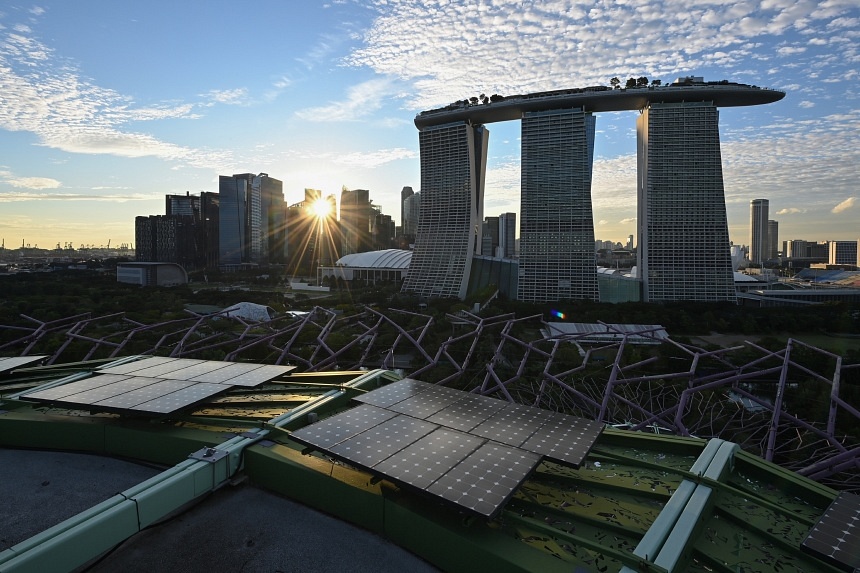SINGAPORE – Singapore’s growing appetite for imported renewable energy will help to lay the groundwork for the development of a regional grid in South-east Asia, stimulating investments in renewable energy projects, and helping to grow the manufacturing sector to meet demand for solar panels and batteries.
Energy Market Authority (EMA) chief executive Puah Kok Keong said Singapore is willing to make the investments required to help the country tap renewable energy from its neighbours, which, in turn, forms the backbone of the Asean regional power grid.
Such a grid can improve interconnectedness within countries, and incentivise investments in domestic renewable projects, he added.
According to the International Renewable Energy Agency, US$290 billion (S$380 billion) is needed for the region to boost renewable energy capacity to reach the Asean target of having 23 per cent of its energy produced from renewable sources by 2025. As at 2022, renewable energy made up 15.6 per cent of Asean’s energy supply.
“People have always recognised that there are benefits to having an Asean power grid. But the impetus to make this a reality today is much stronger compared with what it was 20 or 30 years ago,” said Mr Puah in his first interview with the media since taking the helm of Singapore’s energy regulator in July 2024.
The Asean regional grid, in the works for decades, made headway in 2022 when Singapore began importing 100MW of hydropower from Laos via Thailand and Malaysia.
In October 2024, this was extended to another 100MW of electricity imports from Malaysia’s grid, which comprises coal and natural gas, as part of the project’s second phase.
The renewed push for multilateral electricity trade comes as the region is hungry to decarbonise its growing economies, moving away from fossil fuels like coal, and cutting planet-warming emissions to meet climate change targets.
Singapore has already signed agreements with Indonesia, Cambodia and Vietnam to import some 5.6 gigawatts (GW) of clean electricity by 2035 – which is close to half of the 13GW of Singapore’s generation capacity in 2023.
It currently has a target of importing 6GW of low-carbon electricity from its neighbours by 2035, which will account for around 30 per cent of the Republic’s electricity demand that year. Electricity demand is expected to grow by around 3 per cent to 5 per cent every year.
With its space constraints, Singapore has limited capacity to produce renewables domestically, and is reliant on at least 95 per cent natural gas. Even in 2035, natural gas is expected to make up at least 50 per cent of Singapore’s electricity mix.
Given that the Republic already faces higher electricity prices compared with its neighbours, Singapore has a greater “willingness to pay” for imported clean electricity, Mr Puah said.
The Straits Times had earlier reported that imported electricity may not be more expensive than other low-carbon options that Singapore is exploring, such as nascent carbon capture technology.
But importing renewable energy would incur other costs, such as development and laying of subsea cables to transmit the power over long distances.

